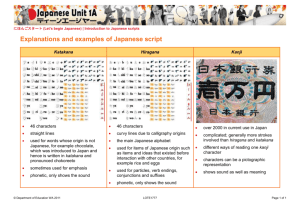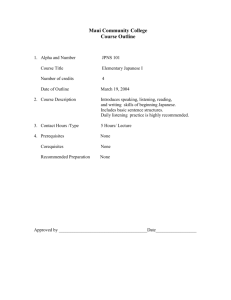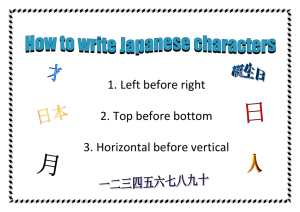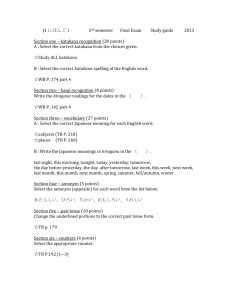the Japanese number grid
advertisement
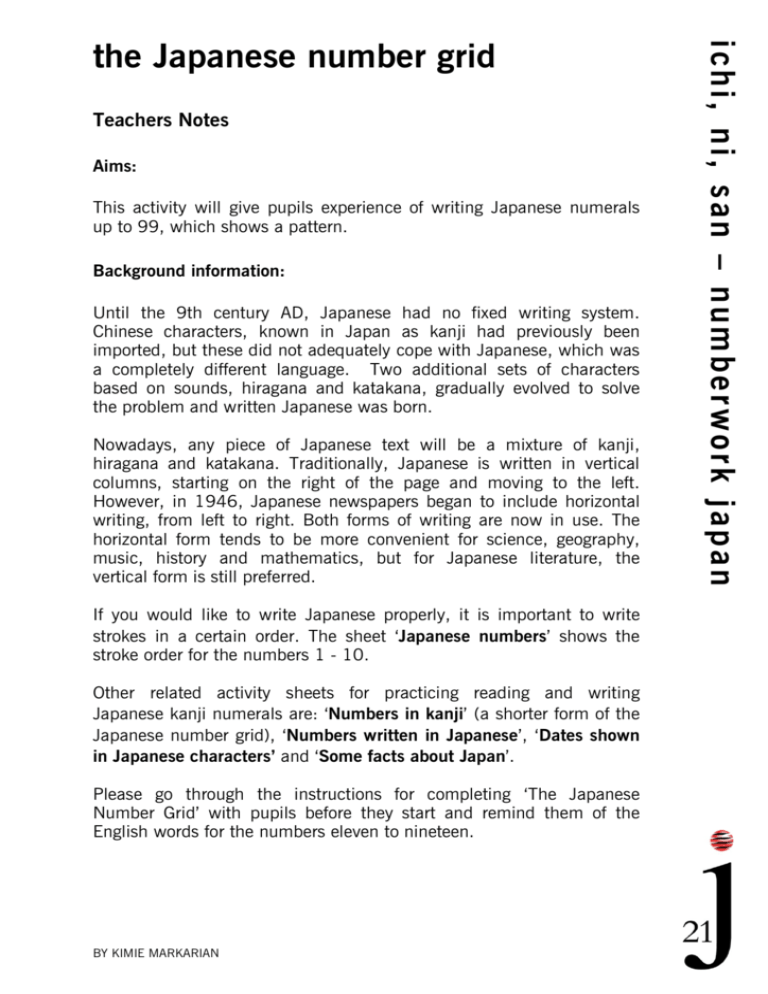
Teachers Notes Aims: This activity will give pupils experience of writing Japanese numerals up to 99, which shows a pattern. Background information: Until the 9th century AD, Japanese had no fixed writing system. Chinese characters, known in Japan as kanji had previously been imported, but these did not adequately cope with Japanese, which was a completely different language. Two additional sets of characters based on sounds, hiragana and katakana, gradually evolved to solve the problem and written Japanese was born. Nowadays, any piece of Japanese text will be a mixture of kanji, hiragana and katakana. Traditionally, Japanese is written in vertical columns, starting on the right of the page and moving to the left. However, in 1946, Japanese newspapers began to include horizontal writing, from left to right. Both forms of writing are now in use. The horizontal form tends to be more convenient for science, geography, music, history and mathematics, but for Japanese literature, the vertical form is still preferred. If you would like to write Japanese properly, it is important to write strokes in a certain order. The sheet ‘Japanese numbers’ shows the stroke order for the numbers 1 - 10. Other related activity sheets for practicing reading and writing Japanese kanji numerals are: ‘Numbers in kanji’ (a shorter form of the Japanese number grid), ‘Numbers written in Japanese’, ‘Dates shown in Japanese characters’ and ‘Some facts about Japan’. Please go through the instructions for completing ‘The Japanese Number Grid’ with pupils before they start and remind them of the English words for the numbers eleven to nineteen. BY KIMIE MARKARIAN ichi, ni, san – numberwork japan the Japanese number grid Complete the Japanese Number Grid. There is no kanji numeral for ‘zero’, therefore the top right square remains blank. The kanji numerals for the numbers from one to ten, one hundred and one thousand have already been filled in for you. Please start from 11 in the “10” column. In Japanese this is written ten and one ( ). (Remember that kanji script runs vertically.) Continue to the bottom of the column, ten-nine. The next column is twenty, this is shown by two and ten ( ). So for 21 you need the symbols for two, ten and one ( ). Continue and complete the column. By the time you reach 99 the pattern will be obvious. NB. Ten, hundred and thousand are expressed in one symbol. 1000 100 90 80 70 60 50 40 30 20 10 0 1 2 3 4 5 6 7 8 9 BY KIMIE MARKARIAN ichi, ni, san – numberwork japan the japanese number grid
